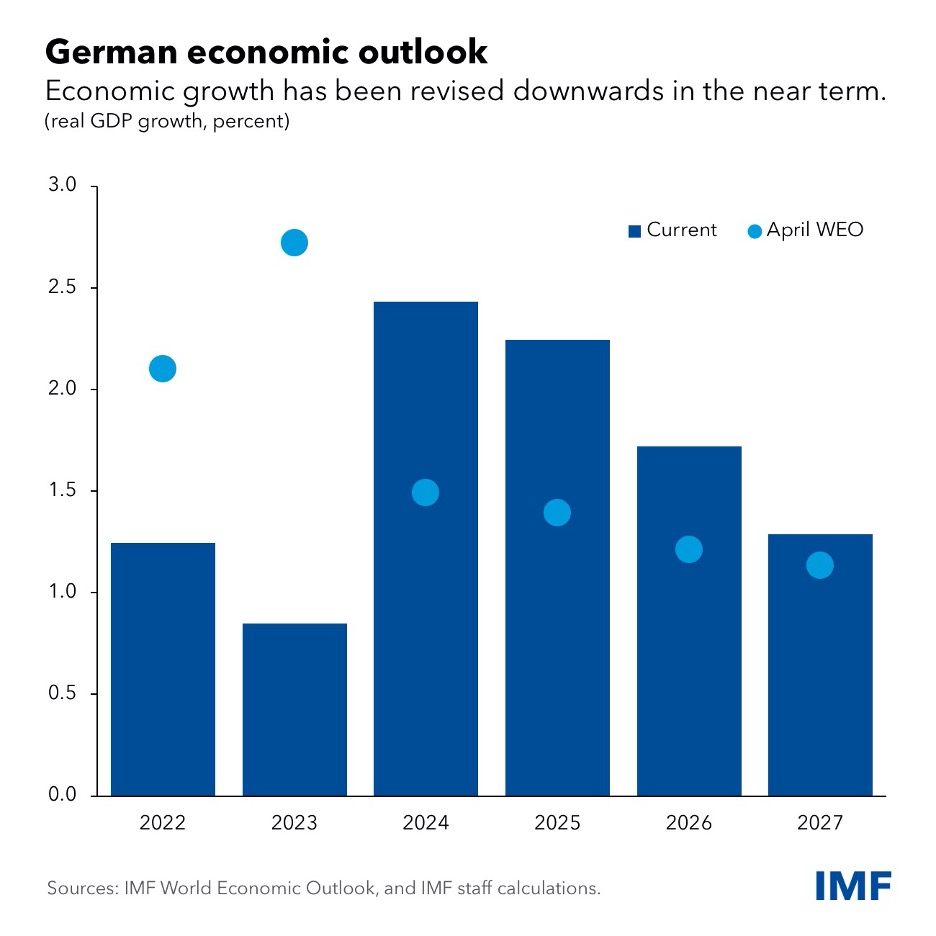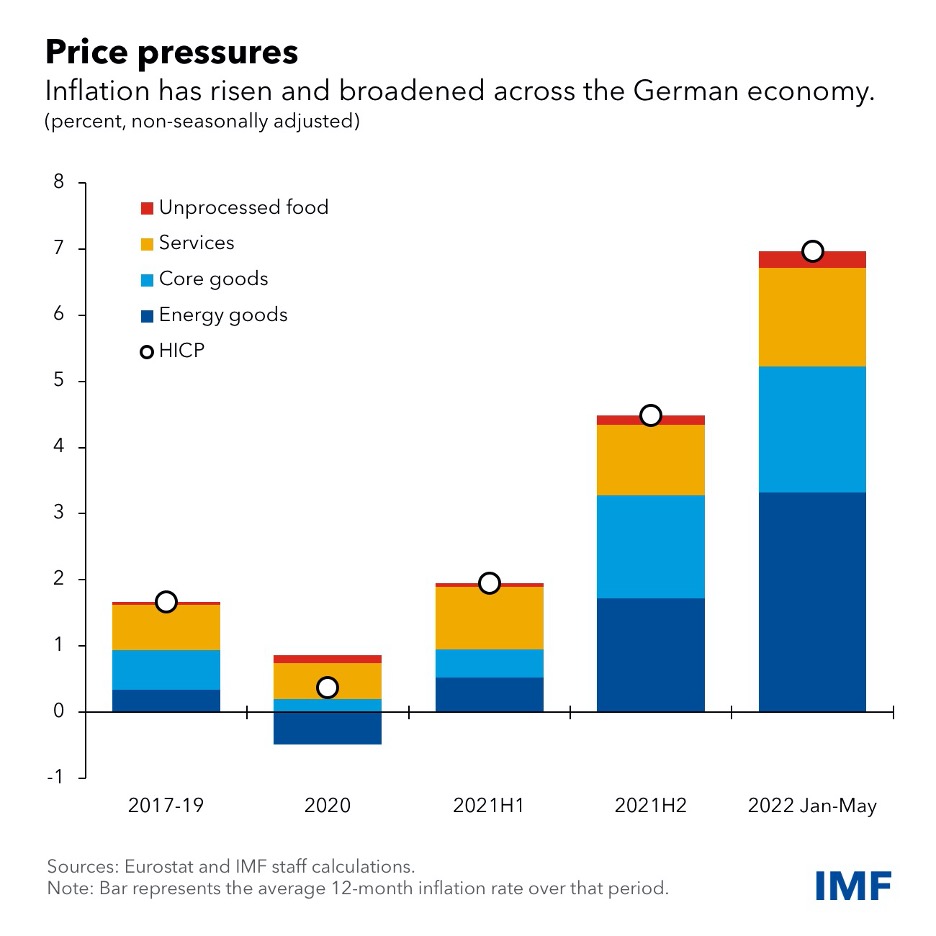Germany Faces Weaker Growth Amid Energy Concerns
July 22, 2022
Related Links
At the start of the year, the German economy was showing signs of overcoming the problems that had capped growth in 2021. Supply bottlenecks that had hampered manufacturing were easing and services were opening up again as the country emerged from a severe winter wave of the Delta variant.
It all changed with Russia’s invasion of Ukraine on February 24.
Energy prices and inflation soared, consumer confidence fell, and foreign demand for Germany’s exports weakened. The European Union responded with several packages of sanctions against Russia; Germany suspended approval of the Nord Stream 2 gas pipeline and committed to increasing its defense spending. The German government quickly announced support measures, including relief to vulnerable households and liquidity support to firms, that helped offset some of the spillover effects from the war.
Near-term growth downgraded
This week, the IMF Executive Board discussed the worsening German economic outlook and policies that could help.
After growth of 2.9 percent in 2021, we expect economic growth to slow sharply to 1.2 percent in 2022 owing to elevated energy import prices and weak consumer confidence. We expect supply bottlenecks to persist even into 2023. These bottlenecks, combined with the usual delayed pass through of wholesale to retail gas prices, drives down our expectations of growth to just 0.8 percent in 2023. These growth rates for 2022 and 2023 are, respectively, 0.9 and 1.9 percentage points below those that we projected in April’s World Economic Outlook.
These projections account for the fiscal support that continues to be provided to the economy. This includes an expansion of short-time work benefits (Kurzarbeit) and extension of pandemic-era grants to firms, as well as 1.2 percent of GDP in new spending on defense, climate, refugees and measures to help households cope with higher energy prices.
Consumer price inflation reached 8.3 percent in June. About three-fifths of inflation so far has come from energy prices, but price pressures have spread to other goods and to services, partly reflecting indirect effects from high energy prices and recovering demand. We expect inflation to average 7.7 percent in 2022 before moderating to 4.8 percent in 2023 as energy prices stabilize. Inflation expectations five years into the future remain anchored near the European Central Bank’s target of 2 percent.
Hourly wages have risen by about 3.3 percent annually since the start of the pandemic, less than consumer prices and close to output prices. While we cannot rule out a spiral between wages and prices, it does not seem likely at this point given the weakening growth prospects.
Uncertainty around these projections is very high. The greatest threat to this economic outlook is a persistent and full cutoff of Russia’s gas exports to Germany and Europe more broadly. Our analysis of this downside scenario suggests that it could reduce German economic activity and raise inflation by sizable amounts.
Securing the recovery, greening the economy
Facing these rising risks, fiscal policy needs to be flexible and ready to provide more support to vulnerable households if the situation deteriorates. In a severe downside scenario with gas shortages and spiking costs for gas consumers, postponing the return to the debt brake rule may be necessary for the government to be able to take on additional borrowing to support the economy.
The government has taken significant steps to boost energy security, including financing floating terminals to import liquified natural gas, requiring operators to fill gas storage facilities, and expanding its toolkit of emergency legal powers. Further efforts to strengthen energy security could include financial incentives to reduce gas consumption and intensified cooperation within the EU on emergency plans.
The need to enhance energy security creates an opportunity for Germany to build a cleaner economy, less dependent on fossil fuels. A green public investment push is urgently needed to crowd in private investment in clean technologies like renewable power.
The financial sector has weathered the challenging circumstances well so far, but there are pockets of vulnerability (especially in housing and energy markets) and bank profits have been low for many years. Therefore, it is important to monitor the sensitivity of banks’ balance sheets to evolving risks, and to strengthen banks’ buffers as needed.










